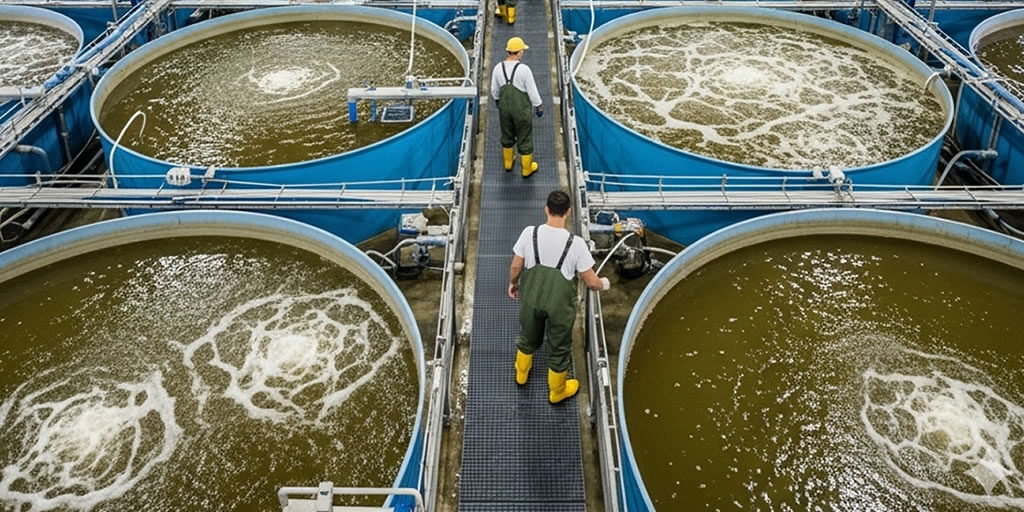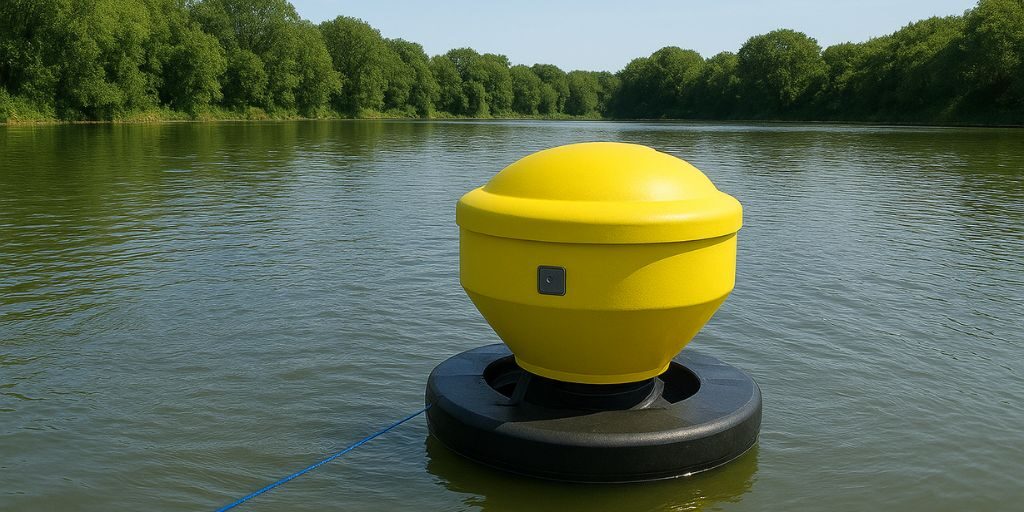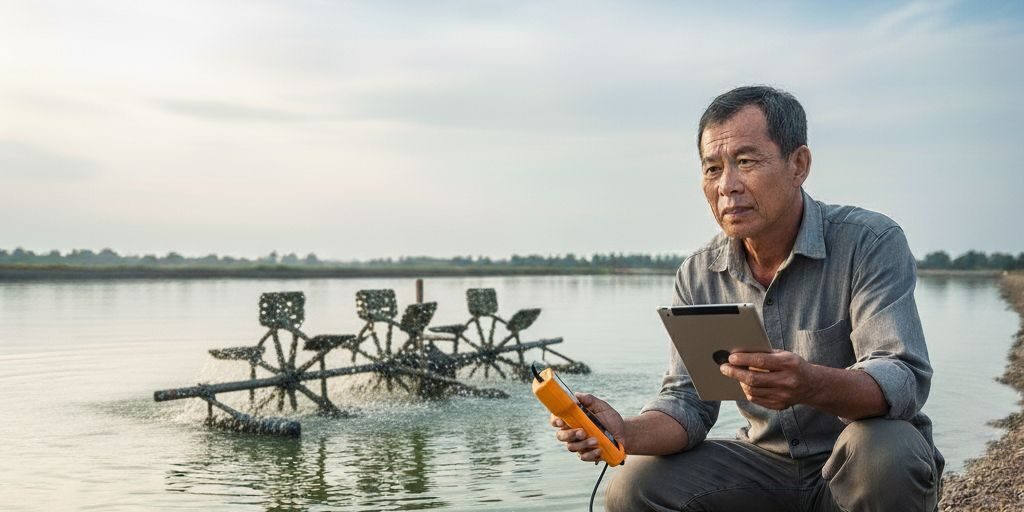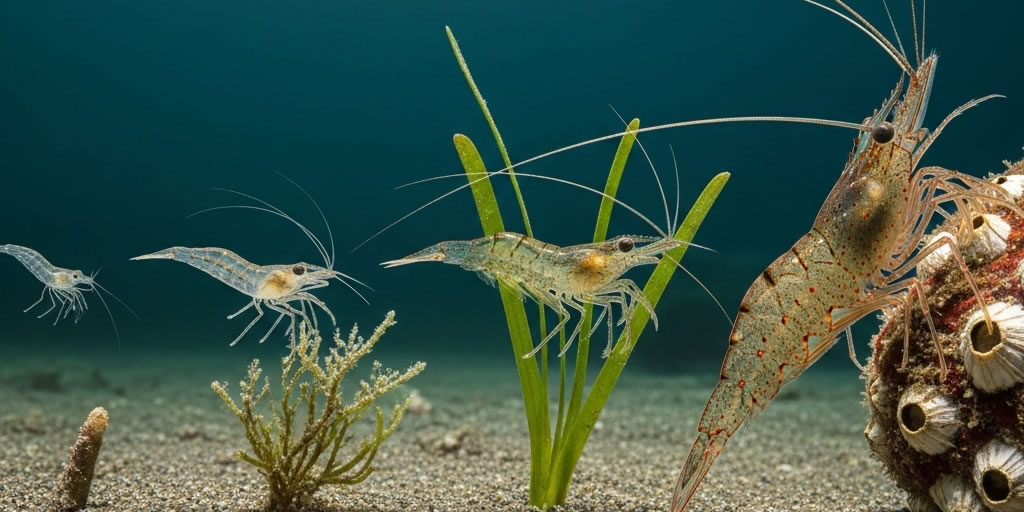- Software Gestor para Aquicultura
- (85) 2139-6730
- contato@despesca.com.br
Biofloc vs. Conventional Systems: A Comparative Analysis of Costs, Investment, and Profitability

Social Responsibility in Aquaculture: Strengthen Your Brand Through Community Engagement
26/08/2025
Cash Flow in Aquaculture: How to Plan for the Off-Season and Maintain Financial Health
28/08/2025Modern aquaculture is a field of constant evolution, where the pursuit of greater productive efficiency and financial sustainability dictates the pace of innovation. At the center of this discussion, two production models stand out and often place producers at a strategic crossroads: the conventional system (extensive or semi-intensive) and the biofloc technology (BFT) system. The choice between them is not trivial and directly impacts the initial investment, operational costs, and, consequently, the profitability of the enterprise.
This article aims to conduct an in-depth comparative analysis between the two systems, breaking down the main economic and productive factors to assist aquaculturists in making the decision most aligned with their objectives, available capital, and technical profile.
The Conventional System: Tradition as a Foundation
The conventional system, whether extensive or semi-intensive, represents the historical foundation of fish and shrimp farming. It is characterized by the use of large pond areas, low to moderate stocking densities, and a significant dependence on environmental conditions and the natural productivity of the water body.
In this model, water exchange is a constant management tool, used to remove excess nutrients and metabolites, such as ammonia and nitrite, and to maintain dissolved oxygen levels. Feeding is largely supplementary to the primary productivity (phytoplankton) of the pond.
Initial Investment in the Conventional System
The initial investment in a conventional system is predominantly allocated to the acquisition or leasing of large tracts of land and the construction of ponds. The cost per excavated hectare may be lower compared to more intensive structures, but the need for a significantly larger total area to achieve large-scale production increases the final investment value.
Support infrastructure, such as aerators, is necessary but in lower density per area compared to BFT. A robust water intake and supply system is required, capable of promoting the high exchange rates the system demands, which also represents a considerable initial cost.
Operational Costs and Conventional Productivity
Operational costs in the traditional model are widespread. The expenditure on feed, although a major component, tends to have a less efficient feed conversion ratio (FCR). Part of the uneaten feed and animal waste accumulates at the bottom, requiring management and potentially creating anoxic zones.
The cost of electricity is mainly directed towards water pumping and supplemental aeration. Labor, although necessary, generally does not require a level of technical specialization as high as in super-intensive systems, focusing more on feeding routines and basic monitoring. Productivity, measured in kilograms per hectare, is limited by the carrying capacity of the environment, rarely exceeding 5 to 10 tons per hectare/year in well-managed semi-intensive systems.
The Biofloc System (BFT): Intensification and Biotechnology
The biofloc technology (BFT) system is a biotechnological approach that turns a problem—the accumulation of nitrogenous waste—into a solution. In this model, cultivation occurs at high densities, in smaller tanks or ponds with minimal or no water exchange.
Through the management of the water’s carbon/nitrogen (C:N) ratio and constant, intense aeration, the development of a microbial community (bacteria, microalgae, protozoa) is stimulated. These microorganisms aggregate into “flocs,” which remove toxic nitrogenous compounds from the water and, at the same time, serve as a protein-rich food supplement for the cultivated animals.
Initial Investment in the BFT System
The initial investment in BFT is notably higher per square meter. Although the total area required is drastically smaller for the same production goal, infrastructure costs are intensive. It requires the construction of smaller, waterproofed tanks or ponds with a design that facilitates water circulation and the suspension of flocs.
The main difference in investment lies in the aeration system. BFT depends on continuous and powerful aeration (through blowers, paddlewheel aerators, porous hoses) to meet the high oxygen demand of the animals and the microbial community, as well as to keep the flocs in suspension. A backup power system, such as generators, is not optional but a mandatory safety item, increasing the initial cost.
Operational Costs and BFT Productivity
In BFT, the profile of operational costs changes. The electricity bill becomes the main variable cost, often surpassing the cost of feed, due to the need for 24/7 aeration. On the other hand, the cost of water is virtually eliminated, which represents a huge economic and environmental advantage, especially in regions with water restrictions.
The cost of feed is optimized. The feed conversion ratio in BFT is significantly better, as the animals continuously feed on the bioflocs, benefiting from microbial protein. This allows for the use of feeds with lower crude protein content, reducing the cost per kilo of feed. The workforce needs to be more qualified, with knowledge in microbiology and water chemistry for the fine-tuning of parameters.
Productivity is the great asset of BFT. It is possible to achieve production densities that exceed 30, 40, or even more tons per hectare/year, an exponential leap compared to the conventional system.
Direct Comparative Analysis: Cost Per Kilo Produced
When analyzing the final cost per kilo of fish or shrimp produced, the scale balances out. In the conventional system, costs are diluted over a smaller production per area, with a greater emphasis on feed and water pumping.
In BFT, the very high cost of energy and the need for inputs to manage the C:N ratio (such as molasses or dextrose) are offset by the drastic improvement in feed conversion and the extremely high productivity per area, which dilutes fixed costs (infrastructure, labor) over a much larger production volume.
Profitability and Return on Investment (ROI)
Profitability is intrinsically linked to management efficiency. A well-operated conventional system can be profitable, with lower risk associated with systemic failures (like a power outage). The return on investment tends to be slower due to lower production intensity.
BFT, on the other hand, offers a much more accelerated potential for profitability and ROI. The ability to perform multiple cycles per year in the same area and the high productivity generate significantly higher gross revenue. However, the risk is also proportionally higher. A failure in the aeration system or a biochemical imbalance can lead to massive losses in a matter of hours.
The Critical Role of Management: The Decisive Factor
Regardless of the chosen system, success lies not just in the structure but in the precise control of the operation. The complexity of BFT, in particular, makes the use of management software not just useful, but essential. Daily monitoring and recording of multiple parameters, strict control of inputs like feed and energy, and data analysis for decision-making are vital.
For both systems, cost control is a pillar. Accurately tracking each component of the production cost is fundamental to calculating real profitability and identifying points for optimization. Management tools, such as the Despesca system, automate these processes, offering clear reports that turn raw data into business intelligence, ensuring the producer has a clear view of the economic viability of each cycle.
Conclusion: Which Path to Follow?
The choice between biofloc and the conventional system does not have a single answer. The conventional system is more suitable for producers with large availability of land and water, less capital for investment in intensive technology, and who are looking for a model with lower operational risk.
The biofloc system is the choice for the entrepreneur who seeks to maximize production in limited areas, has more capital to invest in technology and infrastructure, and has access to or is willing to invest in specialized technical knowledge. It is a high-performance system, with high potential profitability, but also high risk, requiring rigorous and data-driven management.
Ultimately, the decision should be based on a solid business plan that considers the economic feasibility analysis of both scenarios. And, for either path, the implementation of professional management, supported by technological tools, will be the differentiator that separates a subsistence operation from a truly profitable and sustainable aquaculture business.




